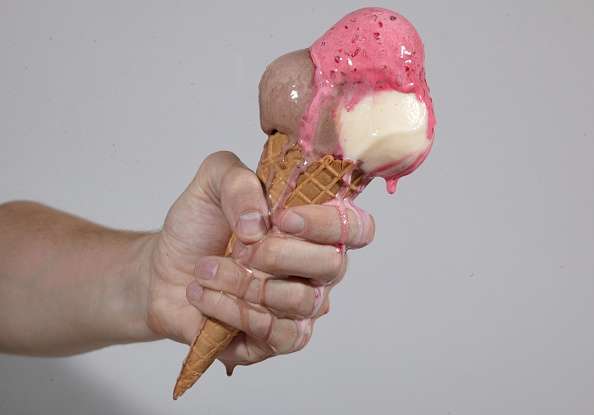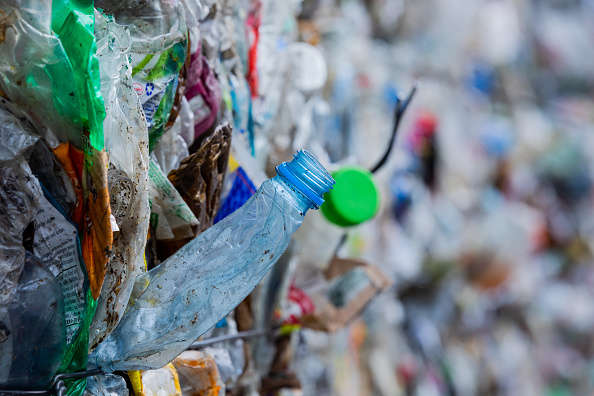Create a free profile to get unlimited access to exclusive videos, sweepstakes, and more!
Not so vanilla: plastic trash can be transformed into vanilla flavoring

Your next cupcake — or ice cream cone, or cookie, or anything with vanilla flavoring — might have started out as plastic.
It only sounds unappetizing. Scientists have figured out a way to genetically engineer E. coli bacteria so it can turn discarded plastic into vanillin, the same stuff you need for countless Pinterest recipes. Too much unusable plastic and the demand for vanillin are what brought about a highly unusual experiment that resulted in something inedible turning into something delicious with the help of a bacteria whose un-engineered form causes food poisoning.
While this isn’t the first time plastic has been repurposed and given an afterlife, it has never before morphed into dessert. Biologists Joanna Sadler and Stephen Wallace of the University of Edinburgh were able to pull this off and recently published their findings in Green Chemistry.
“We demonstrate the conversion of post-consumer PET from a plastic bottle into vanillin by coupling the pathway with enzyme-catalysed PET hydrolysis. This work demonstrates the first biological upcycling of post-consumer plastic waste into vanillin using an engineered microorganism."
The type of plastic used to make the amazing transformation is polyethylene terephthalate (PET). We have a PET problem. It’s everywhere, from the polyester overused in fast fashion (it’s actually the chemical name for polyester) to plastic packaging that most of us have learned to toss in the recycling bin by now, but still plague our recycling plants. PET is made of ethylene glycol and terepthalic acid, which bond into polymer chains that create long strands of the plastic. These strands are cut into pellets and then melted to create just about anything.
If you live on Earth in this era, PET is one thing you can’t escape. Around 50 million tons of junk PET get dumped every year stressing both the environment and economy. What is even worse is that PET is derived from the same non-renewable fossil fuels that power cars and other machinery, and once the ooze of dead dinosaurs and other prehistoric things is gone, it’s gone. There have been no methods of biological PET upcycling until now.
Sadler and Wallace hypothesized that one of the monomers that makes up PET polymers, terepthalic acid, could possibly become vanillin if it went through a process that involved being converted by enzymes from E. coli. Terepthalic acid has previously been converted to vanillic acid, but never before into actual vanillin. Because vanillin is an aldehyde, an organic substance made out of CHO molecules, scientists decided to use a variant of this otherwise nauseating bacteria, E. coli MG1655 RARE (reduced aromatic aldehyde reduction).
Through a five-step pathway, terephthalic acid could be converted into vanillin by enzymes the E. coli RARE bacteria produced, which used oxygen to act as catalysts for the chemical reaction. The bacteria have been proven to produce the same three enzymes before. This is why they were upgraded to express only these enzymes, which are plasmids capable of cloning themselves on their own in many microorganisms, and therefore ideal for genetic manipulation. Only cells engineered to express all three plasmids could create vanillin.
After promising initial results, E. coli RARE bacteria were then further optimized until they eventually yielded an impressive 79 percent vanillin. This is huge considering that global demand for vanillin is expected to skyrocket to 59,000 tons this year. It may be best known for things like cupcakes and ice cream, and also perfume if you're into that, but it also has more unconventional uses in pharmaceuticals, weed killers, antifoaming agents and cleaning products, including a disinfectant spray that smells like vanilla. It does exist.
“This work substantiates the philosophy that post-consumer plastic may be viewed not as a waste product, but rather as a carbon resource and feedstock to produce high value and industrially relevant materials and small molecules,” the scientists said.
Synthetic vanilla produced by one of the most infamous types of bacteria associated with food poisoning may someday be one of the things you throw in your reusable grocery bag.















